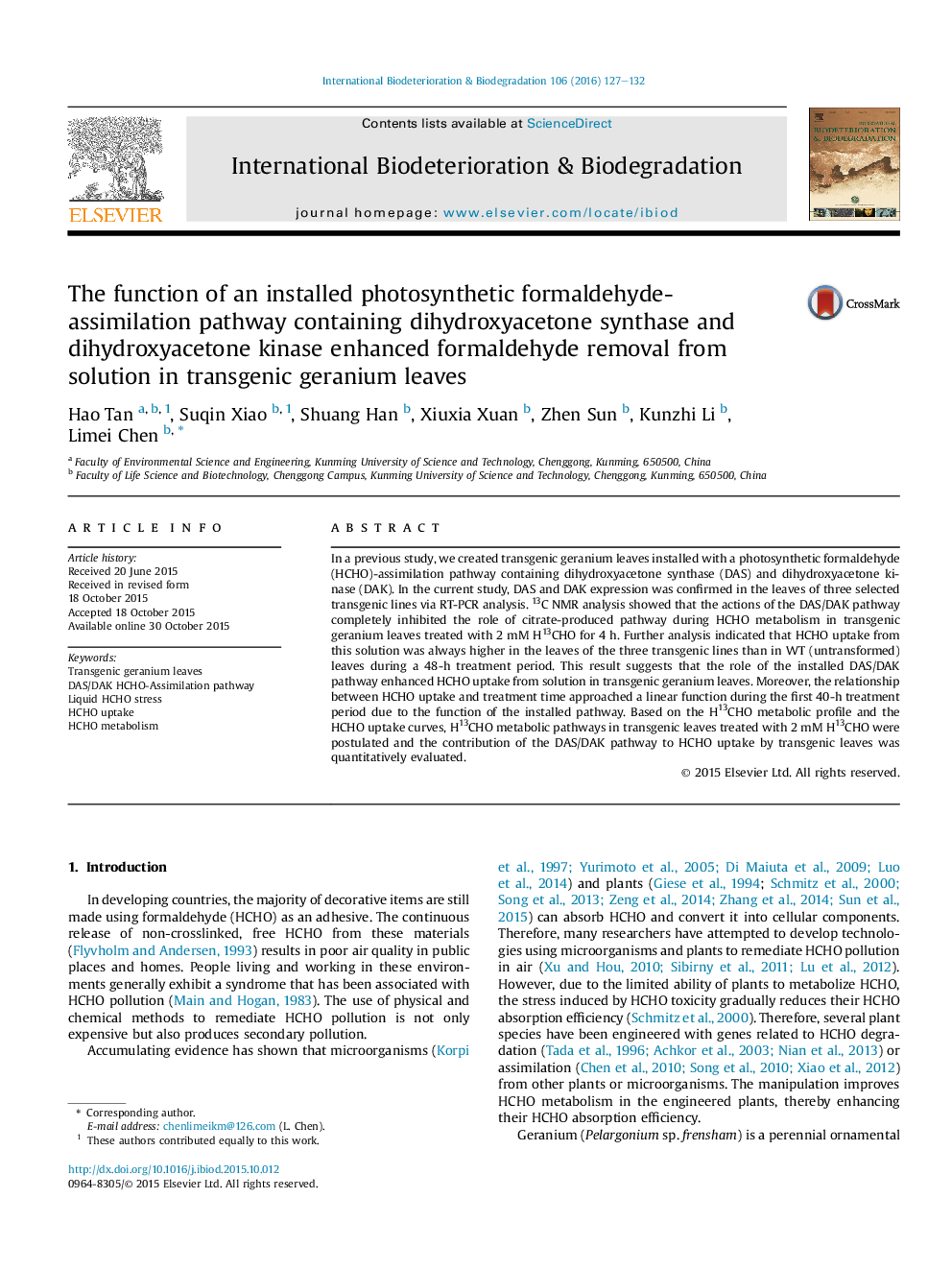| Article ID | Journal | Published Year | Pages | File Type |
|---|---|---|---|---|
| 4364294 | International Biodeterioration & Biodegradation | 2016 | 6 Pages |
•HCHO-uptake kinetics by DAS/DAK leaves from a HCHO solution was investigated.•HCHO can be assimilated via the DAS/DAK pathway under a short stress of liquid HCHO.•Original HCHO metabolic pathways did not function in liquid HCHO-treated transgenic leaves.•Function of the DAS/DAK pathway enhanced HCHO uptake by transgenic leaves.•Contribution of the DAS/DAK pathway to HCHO uptake by DAS/DAK leaves was evaluated.
In a previous study, we created transgenic geranium leaves installed with a photosynthetic formaldehyde (HCHO)-assimilation pathway containing dihydroxyacetone synthase (DAS) and dihydroxyacetone kinase (DAK). In the current study, DAS and DAK expression was confirmed in the leaves of three selected transgenic lines via RT-PCR analysis. 13C NMR analysis showed that the actions of the DAS/DAK pathway completely inhibited the role of citrate-produced pathway during HCHO metabolism in transgenic geranium leaves treated with 2 mM H13CHO for 4 h. Further analysis indicated that HCHO uptake from this solution was always higher in the leaves of the three transgenic lines than in WT (untransformed) leaves during a 48-h treatment period. This result suggests that the role of the installed DAS/DAK pathway enhanced HCHO uptake from solution in transgenic geranium leaves. Moreover, the relationship between HCHO uptake and treatment time approached a linear function during the first 40-h treatment period due to the function of the installed pathway. Based on the H13CHO metabolic profile and the HCHO uptake curves, H13CHO metabolic pathways in transgenic leaves treated with 2 mM H13CHO were postulated and the contribution of the DAS/DAK pathway to HCHO uptake by transgenic leaves was quantitatively evaluated.
